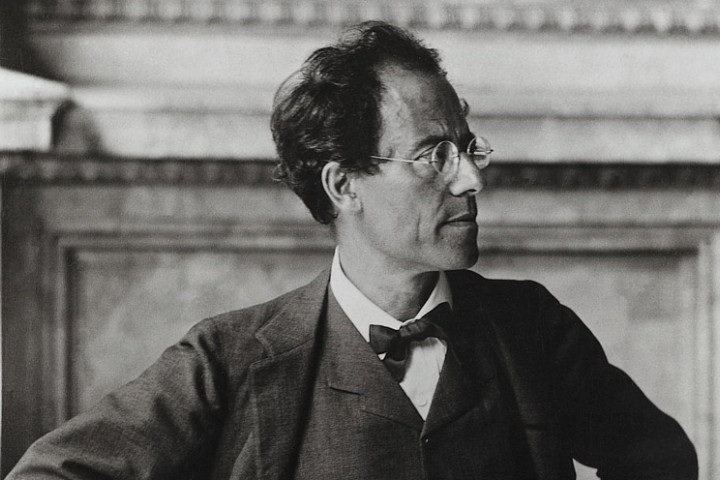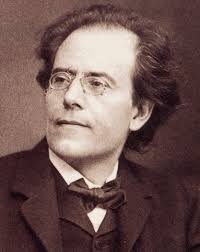Gustav Mahler (1860–1911) stands as one of the most profound and influential composers of the late Romantic era, known for his expansive symphonies and emotionally charged orchestral songs. His works often explore existential themes and blend a wide range of musical styles and influences. Here’s a deep dive into Mahler’s ten best compositions, each a testament to his genius.
1. Symphony No. 2 “Resurrection” (1888-1894)
Key Features:
- Grand scale, combining a large orchestra, soloists, and a choir.
- Explores themes of life, death, and resurrection.
Overview: Mahler’s Symphony No. 2 is a monumental work that culminates in a powerful finale with a choral affirmation of resurrection and eternal life. The symphony begins with a dramatic funeral march and traverses various emotional landscapes before reaching its transcendent conclusion.
Notable Movements:
- 1st Movement: “Allegro maestoso” – A turbulent and dramatic funeral march.
- 5th Movement: “Im Tempo des Scherzos” – Featuring the “Resurrection Ode,” leading to a grand, uplifting choral ending.
2. Symphony No. 1 “Titan” (1887-1888)
Key Features:
- Incorporates folk tunes and a wide range of moods.
- Originally conceived as a symphonic poem.
Overview: The Symphony No. 1 is notable for its innovative use of orchestration and its evocation of nature and folk elements. The third movement features a minor-key version of the children’s song “Frère Jacques,” transformed into a haunting funeral march.
Notable Movements:
- 3rd Movement: “Feierlich und gemessen, ohne zu schleppen” – A funeral march with a sardonic twist.
- 4th Movement: “Stürmisch bewegt” – A dramatic and triumphant finale.
3. Symphony No. 5 (1901-1902)
Key Features:
- A journey from darkness to light.
- Famous for its Adagietto, a slow movement for strings and harp.
Overview: Mahler’s Symphony No. 5 is renowned for its emotional depth and complexity. The symphony opens with a trumpet fanfare and a grim funeral march but progresses towards a radiant, joyful conclusion.
Notable Movements:
- 4th Movement: “Adagietto” – A tender, lyrical interlude that gained fame as the soundtrack to Visconti’s film Death in Venice.
- 5th Movement: “Rondo-Finale” – An exuberant and intricate conclusion.
4. Symphony No. 9 (1908-1909)
Key Features:
- Often interpreted as a farewell to life.
- Complex and emotionally profound.
Overview: Mahler’s Symphony No. 9 is a deeply personal and introspective work. The symphony’s finale, with its slow, disintegrating ending, is frequently seen as Mahler’s contemplation of mortality and farewell to life.
Notable Movements:
- 1st Movement: “Andante comodo” – A deeply reflective and evolving movement.
- 4th Movement: “Adagio” – A serene and slowly dissolving conclusion.
5. Symphony No. 6 “Tragic” (1903-1904)
Key Features:
- Known for its intensity and bleakness.
- Incorporates the “hammer blows” symbolizing fate.
Overview: Symphony No. 6 is often considered Mahler’s most pessimistic symphony. The work’s powerful and tragic nature is underscored by the use of hammer strokes in the finale, representing crushing blows of fate.
Notable Movements:
- 4th Movement: “Finale: Allegro moderato” – Featuring the famous “hammer blows.”
6. Das Lied von der Erde (1908-1909)
Key Features:
- A symphony in all but name, blending song cycle and symphonic form.
- Texts from Chinese poetry, translated into German.
Overview: Das Lied von der Erde (The Song of the Earth) is a unique composition that combines the symphonic and song cycle forms. The work explores themes of nature, beauty, and the transience of life through its six movements.
Notable Movements:
- 6th Movement: “Der Abschied” – A profound and lengthy farewell.
7. Symphony No. 3 (1896)
Key Features:
- Longest of Mahler’s symphonies.
- Embraces themes of nature and creation.
Overview: Mahler’s Symphony No. 3 is a vast and ambitious work that depicts the awakening of nature, humanity’s place within it, and a cosmic vision of life. It involves a large orchestra, chorus, and a contralto soloist.
Notable Movements:
- 1st Movement: “Kräftig. Entschieden” – An extensive opening movement that portrays the awakening of nature.
- 6th Movement: “Langsam. Ruhevoll. Empfunden” – A serene and spiritual finale.
8. Symphony No. 4 (1899-1900)
Key Features:
- Simpler orchestration compared to other symphonies.
- Features a childlike vision of heaven.
Overview: Symphony No. 4 is more restrained in its orchestration, presenting a more delicate and lyrical character. The final movement features a soprano singing a song about a child’s vision of heaven.
Notable Movements:
- 4th Movement: “Sehr behaglich” – Featuring “Das himmlische Leben,” a song depicting a child’s view of heaven.
9. Kindertotenlieder (1901-1904)
Key Features:
- A song cycle based on poems by Friedrich Rückert.
- Themes of mourning and loss.
Overview: Kindertotenlieder (Songs on the Death of Children) is a poignant song cycle that reflects on the profound grief of losing a child. The music is deeply emotional, with a restrained orchestration that highlights the sorrowful texts.
Notable Songs:
- “Nun will die Sonn’ so hell aufgeh’n” – Contemplating the continuation of life after loss.
10. Symphony No. 7 (1904-1905)
Key Features:
- Known for its unconventional structure.
- Includes two “Nachtmusik” (night music) movements.
Overview: Symphony No. 7 is one of Mahler’s more enigmatic works, often referred to as the “Song of the Night.” The symphony’s structure is unusual, and it contains contrasting elements of darkness and light, with a unique orchestral color.
Notable Movements:
- 2nd Movement: “Nachtmusik I” – A night serenade with a mysterious atmosphere.
- 5th Movement: “Rondo-Finale” – A jubilant and exuberant ending.
Conclusion
Gustav Mahler’s compositions are a profound testament to his ability to capture the complexities of human experience through music. His symphonies and song cycles continue to resonate deeply with audiences, offering an emotional and philosophical journey that reflects the existential questions of life, death, and beyond. Each of these ten works showcases Mahler’s genius in orchestration, thematic development, and emotional depth, making him a pivotal figure in the canon of classical music.


Comments are closed